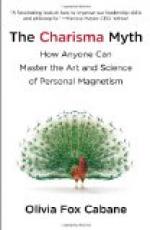It follows from the innate necessity of the perception that objects and their extrinsic and intrinsic causes are resolved into living subjects, and are classified in a hierarchy of specific types, which are accepted by the primitive and ignorant mind as the universal mythical forms.[26] But the necessities of human speech, which is however involved in mythical representations, from the very beginning essentially reflex, require other terms than those of individual and specific animations. It is clear that the simple personifying faculty of the intellect sufficed in its earliest emotions, but that after the slow development of psychical reduplication, and the enlargement of languages and ideas, it no longer satisfied the logical requirements of the mind.
Consequently, explicit,—that is, rational—singular, and specific ideas gradually arose and assumed a definite form; they were interwoven and fused into these individual and specific types, and thus obtained a place in the thoughts and language of primitive man. The gradual intrusion of specific rational ideas is natural to the human mind, since it is logically progressive, and the fact may be observed by those who watch the mental growth of children, and of ignorant and untaught adults.
While the mythical intelligence continues as before to give its habitual mythical interpretation of many natural phenomena, the use is gradually acquired of special and generic symbols which express special and specific ideas, and these no longer include a personification of the individual thing or idea. Without this intrusion of rational ideas any progress would be impossible, as well as the power of expressing all which time and education present to the mind, and gradually enable it to comprehend; the fanciful image is fused in a rational conception, which is, however, not yet definite and explicit.
What are commonly termed abstract ideas arise from this necessity, as the result of the perfection and development of speech, but these were not at first abstract, although they made use of the abstract idea. Unconscious abstraction is certainly one of the primary acts of the intelligence, since abstraction follows from the consideration of a part or of some parts of a whole, which are themselves presented as a whole to the perception. But this primitive abstraction was so far a concrete fact for the perception, in that each act of the apprehension constituted a phenomenon of which the apparent character was abstracted from the other parts which formed a whole, and was transformed into a living subject, as we have already shown at length. The really explicit abstraction, to which man only attained after many ages, consisting in the simple representation of a quality or part of a thing, could not at that time be effected, although special and specific ideas gradually found their way into thought and speech. All the terms for form and relation in primitive speech, and also among modern savages, confirm this assertion, as linguists are aware; the form and relation now expressing an abstract reference to actions and passions in the verbs, nouns, and adverbs, originally referred to a concrete object.




